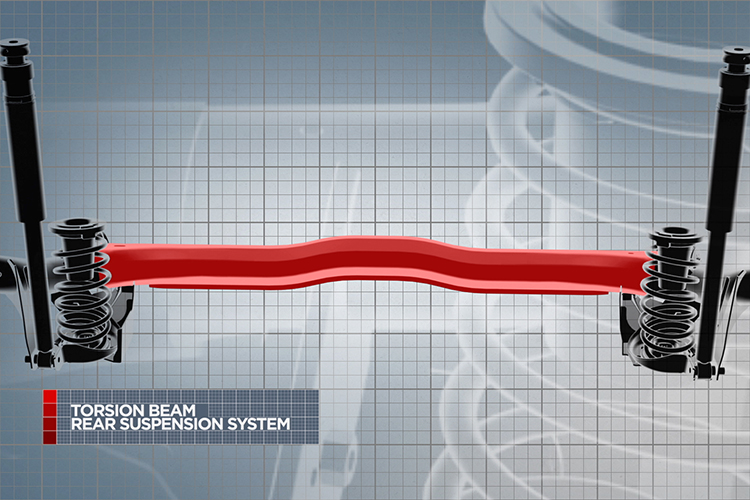
You’ve probably heard fellow petrolheads saying that torsion beam suspensions are no good for handling.
But if it’s supposedly “no good”, why are torsion beam suspensions still fitted to most mass-market models?
1) THEY ARE LESS EXPENSIVE THAN MULTI-LINK SETUPS.
Look at the photo above. The torsion beam suspension setup is essentially a bar between two wheels.
This bar twists slightly under load.
Multi-link setups are a lot more complex and have a lot more components.
They may also be more difficult to tune and set-up.
That makes them more expensive and complicated.
If a multi-link rear suspension was fitted to a mass market model, it would drive up the cost of the car.
2) THEY HELP INCREASE SPACE.
Multi-link suspensions take up more space than torsion beam systems.
This makes packaging a car’s interior trickier.
On the other hand, cars with torsion beam suspensions typically have more interior space and a larger boot.
3) THEY ARE MORE ROBUST THAN MULTI-LINK SUSPENSIONS.
Because there are fewer parts, the torsion beam setup is generally more durable than a multi-link setup.
It also requires fewer bushings. Down the road, fewer wear and tear components will need to be replaced.
4) TORSION BEAM SUSPENSIONS ARE LIGHTER.
Since the entire setup has fewer components, the overall package is lighter.
If your car’s overall kerb weight is lighter, chances are it can be more fuel-efficient, too.
5) THEY DON’T REQUIRE ANTI-ROLL BARS.
The semi-rigid axle also functions as an anti-roll bar of sorts.
If the carmaker wants to save money, it doesn’t have to fit an anti-roll bar at the rear.
AND BESIDES…
A car may have a torsion beam rear suspension, but that does not make it a poor handler.
This setup works particularly well for superminis or small hatchbacks.
For instance, if you recall, the Suzuki Swift and the Suzuki Swift Sport both have this rear setup.
Yet both models are renowned for their nimbleness and fun-to-drive character.












